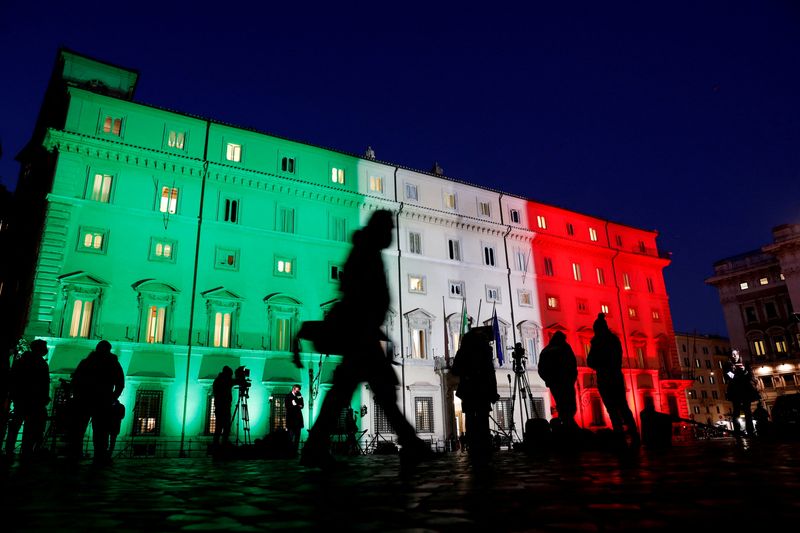By Giuseppe Fonte and Valentina Za
ROME (Reuters) - Italy is considering tightening a state guarantee scheme designed to help banks shed bad debts while weighing its extension to cushion the hit from the Ukraine war and the pandemic, according to people familiar with the matter.
Since its 2016 launch, the 'GACS' scheme has helped Italian banks offload 96 billion euros ($103 billion) in bad debts by softening the hit from the disposals to their earnings.
As of end-2021 investors held 11.6 billion euros in GACS-backed debt, Treasury data showed in April. The scheme in its current form expires on June 14.
Four people briefed on discussions around the scheme's renewal said Rome was considering reintroducing it with terms adjusted to reduce risks for taxpayers, possibly seeking an extension longer than 12 months. One of the options being discussed is an 18-month extension.
The extension would require approval from European Union authorities, which first cleared the measure after ensuring it complied with EU state aid rules.
Rome is considering changes that would reduce the benefit for banks and increase protection for the state to lower the chances it will be left on the hook, the sources said.
Even on stricter terms, the GACS scheme could help Italian lenders, which have disposed of more than 250 billion euros in bad debts since 2015, cope with an anticipated rise in corporate defaults in the wake of the pandemic and the Ukraine crisis.
Italy, which under the scheme guarantees the repayment of the least risky tranche of bad debts repackaged as securities, is considering hiking by at least one notch to 'BBB+' the required rating the "senior" tranche, the sources said.
Rome could also consider reducing the portion of the senior tranche covered by the GACS state guarantees, currently at 100%.
The guarantees lower risks for those investing in the securities, allowing banks to offload the debts at a smaller discount.
COVID LOAN REPAYMENTS
The success of the GACS scheme in bridging the pricing gap between buyers and sellers has turned Italy into Europe's largest market for soured bank loans. Such debts now account for less than 4% of total bank lending, down from a 2015 peak of 18%.
Government support measures last year pushed bankruptcies to a record low but businesses now face capital repayments on part of 280 billion euros in state-guaranteed COVID-loans, just as they grapple with record-high energy and raw material prices.
While striving to help its banks face new shocks, Rome is also keen to safeguard state coffers after loan recoveries in some of the previous GACS-backed deals have fallen short of expectations.
Moody's (NYSE:MCO) Investors Service said in April that 15 out of 28 Italian bad loan securitisation deals it had analysed had undershot initial projections on collections, with a 35% median underperformance compared with the business plans.
Italy had already tightened the scheme's terms in 2019, hiking the senior tranche's minimum rating and introducing mechanisms to prod debt collection companies to stick to business plans.

To further reduce risks, the Treasury is considering introducing a new performance indicator dubbed profitability ratio, the sources said, to avoid that debt collectors beef up revenues by selling on the loans rather than recovering them.
Were the indicator to fall below a certain threshold, recovery firms would not receive their variable fees and interest payments on the medium-risk 'mezzanine' tranches would be temporarily frozen, the sources said. ($1 = 0.9320 euros)